Pipeline: Frequent VLA problems: Difference between revisions
No edit summary |
|||
| Line 121: | Line 121: | ||
<pre style="white-space: pre-wrap; background-color: #E0FFFF;"> | <pre style="white-space: pre-wrap; background-color: #E0FFFF;"> | ||
FIX: | FIX: If there are phase jumps, usually the data for the affected time range needs to be flagged for the affected antenna(s). | ||
</pre> | </pre> | ||
Revision as of 15:51, 17 December 2021
General Description
The VLA pipeline delivers calibrated data and some initial images of VLA observation runs. The quality of the calibration and imaging products is usually assessed through the weblog that is created in each pipeline run (see also the VLA Pipeline guide). During the observations, the VLA may have encountered technical problems that are reflected in various ways in the weblog, where graphs show the behavior of the calibration tables as a function of time, frequency, polarization, etc., and analytical numbers describe the amount of flagging, derived fluxes, image statistics, etc.
Here we would like to briefly describe common VLA observing problems, how they are identified in the pipeline calibration weblog, and how they can be addressed.
RFI
by far the biggest problem is radio frequency interference (RFI). RFI is produced by internal and external sources, can be terrestrial or from satellites that operate at the observed frequency. For the VLA, please find more information on the Radio Frequency Interference webpage. Although weak RFI may sonly slightly raise the noise of an image, stronger RFI will produce artifacts that may render the data unusable. An example for strong RFI is shown in Fig. 1. Flagging procedures are also outlines in the VLA topical CASA guide on flagging.
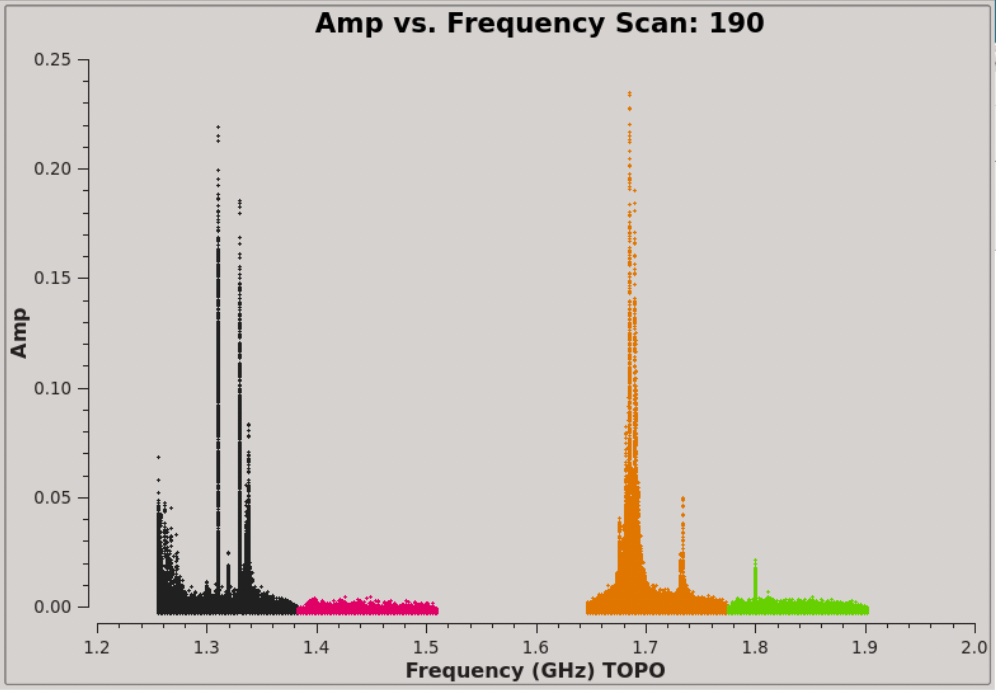 |
FIX: Weak, intermitted RFI will increase the noise and down-weighted in the imaging in the hifv_statwt task. Strong RFI needs to be flagged and only clean data should be calibrated and imaged. Flagging can be manual or automatic.
Pointing
At higher frequencies the VLA requires regular pointing calibrations. Each pointing run will reposition the antennas to be centered on a strong source. If the pointing solution fails, the amplitude of the source will drop. A typical graph looks like the one shown in Fig. 2. The pointing solution for the first half of the run failed, which results in the source drifting away from the center of the primary beam. After a pointing update in the middle of the run, the antenna is positioned properly again.
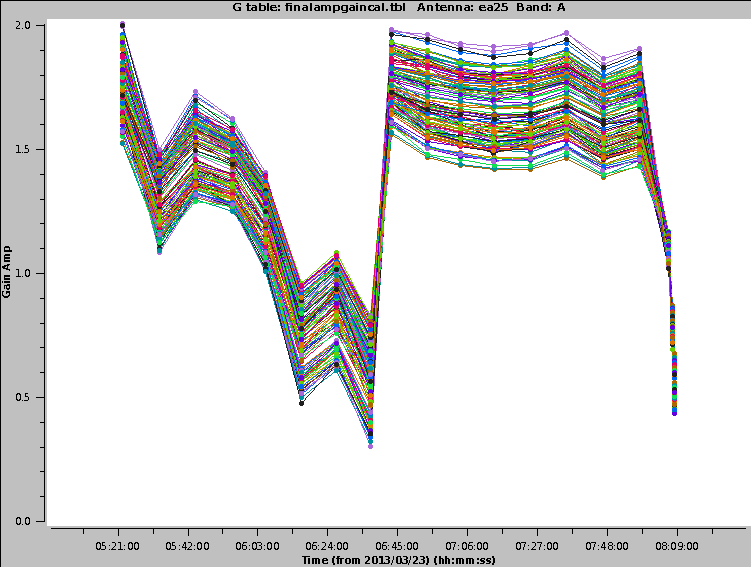 |
FIX: If the pointing is only off by a small amount, the gain calibration will take care of it. If it is off by a large amount, the data for this period and antenna needs to be flagged.
DTS/Deformatter Problems
The digital transmission system (DTS) of each VLA antenna includes a formatting stage to convert the electronic to an optical signal before it is injected on the optical fiber link. On the correlator end the signal will be deformatted back to an electronic signal. Occasionally, the timing on the deformatter can be misaligned which results in very strong amplitude or phase slopes as a function of frequency. Frequently the signal is similar to an abs(sin), or a 'bouncing' signal across a baseband for one polarization, or, in other terms, various numbers of 'V' shapes in the data.
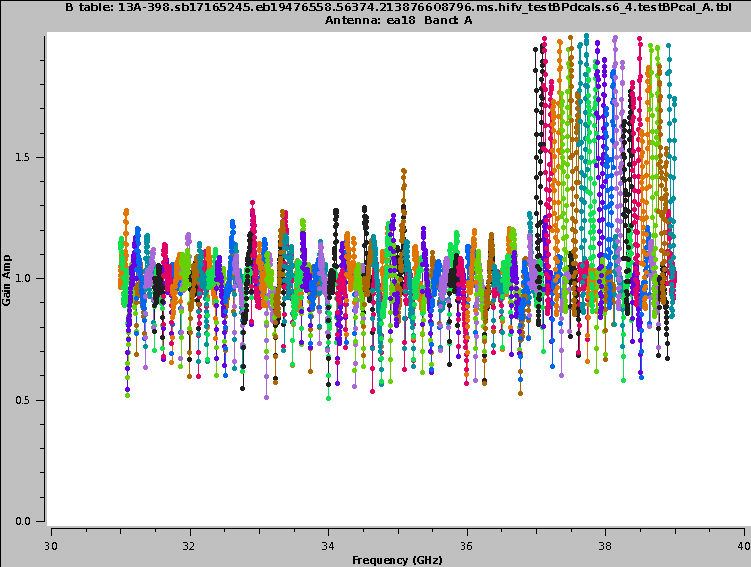 |
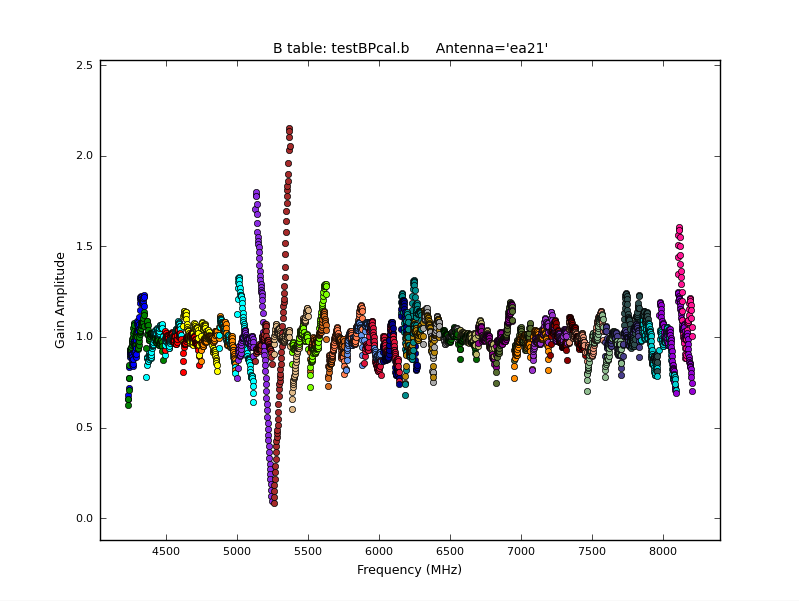 |
FIX: The data in for this baseband, antenna and polarization needs to be flagged.
Correlator Zeros
Under some circumstances, the WIDAR correlator writes exact zeros. The pipeline will usually flag them automatically. If not, they can be removed with CASA"s flagdata task, using the option mode='clip' with clipzeros=True or flag the zeros by hand.
FIX: The pipeline will usually catch them. If not, use CASA's flagdata task.
Baseband and Subband Edges
If spw roll-off frequency edges are very steep, they can degrade gain and phase solutions. Frequently this is not a big problem, but if the gain for the edge channels is close to zero, a division by the bandpass for these channels can get extremely noisy. this is [particularly true for baseband edges. The edgespw, fracspw, and baseband parameters in hifv_flagdata can be adjusted to flag different percentages of the edges (see also VLA pipeline pages). Surely, the edges can also be flagged with the CASA task flagdata, or by hand.
FIX: Adjust the relevant parameters in hifv_flagdata and re-run the pipeline.
Compression
FIX:
Resolved Calibrators
FIX:
Wrong Intents
If the intents of the data are set incorrectly for the observations, the pipeline will use the wrong calibrators for the calibration. Usually this can be fixed by overwriting the intents. The VLA pipeline webpage provides instructions and a script to do this. For more complicated setups, like multiple calibrators or bands with separate calibrator scans, data may be split into smaller MSs that contain only the relevant calibrators for each target, or data reduction by hand may be needed.
Extreme Solution Intervals
FIX:
Weather
FIX:
Decorrelation
FIX:
Shadowing
FIX:
Switches
FIX:
Phase Jumps
Various hardware failures can cause the phase for a given antenna to be unstable in time, often with sudden, large changes in phase in time. Depending on where the problem is, this may affect just a portion of the data to all data on a given antenna. In the first example below, only one baseband's data is affected (large changes at each data point) while the other baseband remains near zero and is not affected. This plot, from the pipeline's Final phase gain cal section found in the hifv_finalcals stage, shows the final phase solutions found for each calibrator (using the long solution interval).
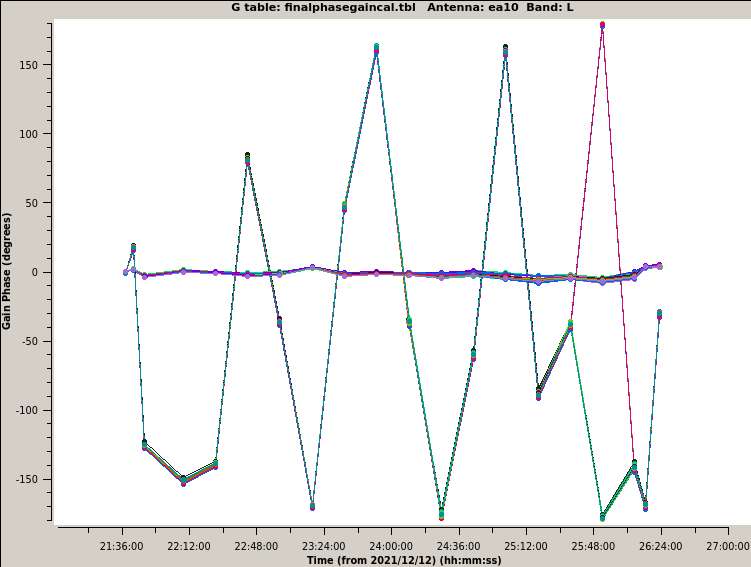 |
FIX: If there are phase jumps, usually the data for the affected time range needs to be flagged for the affected antenna(s).